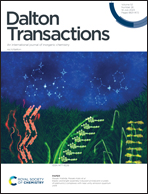A strontium ferrite modified separator for adsorption and catalytic conversion of polysulfides for excellent lithium–sulfur batteries†
Abstract
Lithium–sulfur batteries (LSBs) have emerged as one of the ideal contenders for the upcoming generation of high energy storage devices due to their superb energy density. Nonetheless, the shuttle effect generated by intermediate lithium polysulfides (LiPSs) during cell cycling brings about capacity degradation and poor cycling stability of LSBs. Here, a versatile SrFe12O19 (FSO) and acetylene black (AB) modified PP separator is first presented to inhibit the shuttle effect. Thanks to the strong chemical interaction of Fe and Sr with polysulphides in FSO, it can trap LiPSs and provide catalytic sites for their conversion. Therefore, the cell using the FSO/AB@PP separator has a high initial discharge specific capacity (930 mA h g−1) at 2 C and lasts for 1000 cycles with a remarkably low fading rate (0.036% per cycle), while those using PE and AB@PP separators have inferior initial specific capacities (255 mA h g−1 and 652 mA h g−1, respectively) and fail within 600 cycles. This work proposes a novel approach for addressing the shuttle of LiPSs from a bimetallic oxide modified separator.



 Please wait while we load your content...
Please wait while we load your content...